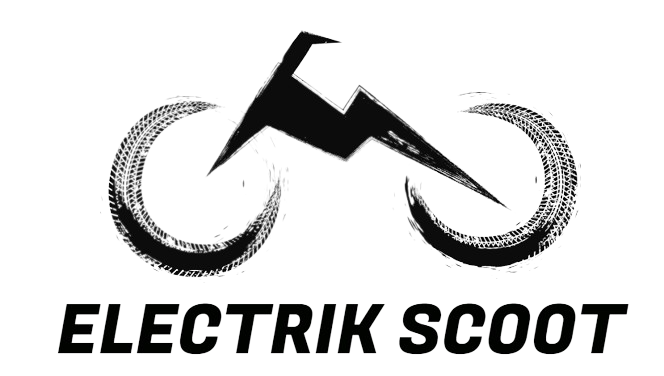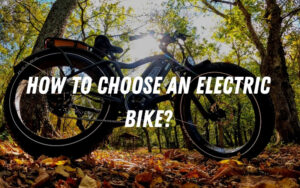Electric bikes, also known as e-bikes, have taken the world of cycling by storm. These eco-friendly and efficient modes of transportation combine traditional pedaling with electric motor assistance. One common query among e-bike enthusiasts and potential buyers is, "How fast does an electric bike go?" In this article, we will delve into the various aspects that determine the speed of an electric bike, considering factors such as motor power, battery capacity, and legal restrictions. So, buckle up as we journey through the world of electric bike speed and performance.
Table of Contents
How Fast Does an Electric Bike Go?
An electric bike's speed can vary widely depending on several factors. On average, most electric bikes can achieve speeds of 20 to 28 miles per hour (32 to 45 kilometers per hour) when using the electric motor assistance. However, some high-performance e-bikes can reach speeds of up to 45 miles per hour (72 kilometers per hour) or even more. The actual speed you can attain on an electric bike depends on the following key factors:
1. Motor Power
The motor is the heart of an electric bike, and its power greatly influences its speed. E-bikes come with different motor power options, typically ranging from 250 watts to 750 watts or more. A higher wattage motor provides more thrust and higher speeds. However, it's important to note that local regulations may dictate the maximum power allowed for electric bikes on public roads and bike paths.
2. Battery Capacity
The battery's capacity plays a crucial role in determining how far and how fast an electric bike can go. A larger battery capacity provides more energy to the motor, allowing for higher speeds over longer distances. Lithium-ion batteries are commonly used in e-bikes due to their high energy density, lightweight design, and longevity.
3. Pedal Assistance Levels
Most electric bikes offer different levels of pedal assistance, usually ranging from low to high. The level of assistance you choose affects how much the motor contributes to your pedaling effort. Higher assistance levels can result in faster speeds, especially when tackling inclines or windy conditions.
4. Terrain and Conditions
The terrain you're riding on and the external conditions such as wind resistance can impact your electric bike's speed. Riding uphill will naturally slow down your pace, while a flat and smooth surface will allow you to reach higher speeds more easily.
5. Rider’s Input
Remember, an electric bike is designed to assist your pedaling effort, so your input matters. The more effort you put into pedaling, the faster you can go, especially when combined with higher pedal assistance levels.
6. Legal Restrictions
It's essential to be aware of the legal regulations governing electric bike speeds in your region. Different countries and states have varying rules regarding the maximum speed an electric bike can achieve. Always ensure you're adhering to the local laws to ensure a safe and legal ride.
Classification of Electric Bikes:
Most people don't know that e-bikes are classified into three types. Class one, class two, and class three. Several states and countries have adopted this classification system for electric motorcycles as a tool for monitoring e-bikes. The three types are as follow:
- Type 1
These e-bikes are among the most inactive of the lot. When you go for a spin, they will only help you with your pedaling but not your speed. Once you start pedaling, a class 1 E-bike will assist you. They will stop assisting you once you hit 20 miles per hour.
- Type 2
Class2 E-bikes are referred to as low-speed electric bicycles in the e-bike market. These e-bikes contain motors that push the rider without the need for pedaling. They are, however also, limited to 20 mph. Even so, you can increase your speed by pedaling when the power is turned off.
- Type 3
These e-bikes are a little speedier and more efficient. They are commonly called speed electric brake bicycles since they provide power only while the rider is pedaling. Class 3 e-bikes have a top speed of 32 mph and are typically fitted with a speed meter.
Peddling Attempts with Each Class
Depending on your purchase, you will require a varied level of pedaling ability. Classes only affect whether your electric bike helps you when stopping or peddling, as discussed below:
- Class 1 E-bikes do not provide help while pedaling; you will have to pedal first to get your e-bike running and assisting you while pedaling. This class offers passive assistance that will accelerate you after you begin pedaling. Thus it is not fully automated.
- Class 2 E-bikes provide the most dynamic arrangement these e-bikes help you from start to finish by speeding and peddling. So, if you want a full-support e-bike, you should get a class 2 or class 3 e-bike.
- Class 3 E-bikes also help you while you're speeding and pedaling. However, these e-bikes may be too quick and dangerous for some people. They are slower than other classes, but their motor strength is usually greater.
Exploring Speed Modes: From Eco to Turbo
Electric bikes often come with multiple speed modes that riders can choose from based on their preferences and riding conditions. Let's take a closer look at some common speed modes you might encounter:
Eco Mode
Eco mode is designed for energy-efficient riding, prioritizing battery conservation over speed. It provides a gentle assist, making it ideal for leisurely rides or longer commutes.
City Mode
City mode offers a balanced blend of assistance and speed. It's suitable for urban commuting, allowing you to navigate through traffic with ease while conserving battery life.
Sport Mode
In sport mode, the motor delivers a more substantial assist, resulting in higher speeds. This mode is perfect for those looking for a brisk ride or tackling hilly terrain.
Turbo Mode
Turbo mode unleashes the full power of the motor, delivering maximum assistance and top speeds. It's excellent for accelerating quickly or conquering steep hills.
What is the maximum speed of an E-bike?
An Average electric bike can be fast as 20-28mph. However, electric bikes can go as fast as 40-75mph maximum but it always depend on E bike motor capacity.
Although the speed of an E-bike is entirely dependent on the wattage, you must also consider the motor's power strength when determining how fast an electric bike moves.
Depending on where you are from, you can travel at a top speed of 28-20 mph while being supported. However, you may travel much faster by pedaling as fast as you can. When pedaling, you can go as fast as your feet allow. However, most e-bikes stop providing electric assistance once they reach 20 miles per hour.
| Battery Watts | Maximum Speed | Maximum Weight |
| 250 watts | 25 km/h (15.5 mph) | 100 pounds |
| 750 watts | 32 km/h (20 mph) | 250 pounds |
| 500 watts | 30 km/h (25 mph) | 220 pounds |
| 1000 watts | 50 km/h (32 mph) | 300 pounds |
| 3000 watts | 75 km/h (50 mph) | 350-400 pounds |
Addressing Common FAQs about Electric Bike Speed
Are electric bikes as fast as regular bikes?
Electric bikes can match or even surpass the speed of regular bikes, thanks to the motor assistance. However, the speed you achieve depends on the factors mentioned earlier, such as motor power and terrain.
Can I ride an electric bike at top speed all the time?
While you can ride at top speed, it's important to do so responsibly and consider the legal regulations in your area. Some regions have speed limits for electric bikes, especially on bike paths and public roads.
Are there e-bike models built for speed?
Yes, there are e-bike models designed specifically for speed enthusiasts. These models often feature more powerful motors and aerodynamic designs to maximize speed.
Do I need a special license to ride a high-speed electric bike?
In some places, high-speed electric bikes may require a special license or registration, similar to motor vehicles. Research the regulations in your area to ensure compliance.
How do I maintain my e-bike for optimal speed?
Regular maintenance is key to keeping your e-bike performing at its best. Keep the chain well-lubricated, ensure the tires are properly inflated, and have the motor and battery checked regularly.
What safety gear should I wear when riding at high speeds?
When riding at high speeds, it's crucial to prioritize safety. Wear a well-fitting helmet, sturdy footwear, and consider protective gear such as knee and elbow pads.
Conclusion: Riding the Speedy Path of Electric Biking
In conclusion, the speed of an electric bike is influenced by a combination of factors, including motor power, battery capacity, pedal assistance levels, terrain, and rider input. By understanding these factors and selecting the appropriate speed mode, you can enjoy a thrilling and efficient ride on your electric bike. Remember to always prioritize safety, adhere to local regulations, and maintain your e-bike for optimal performance. Whether you're cruising in eco mode or zooming in turbo mode, electric bikes offer a versatile and exciting way to navigate your surroundings.



